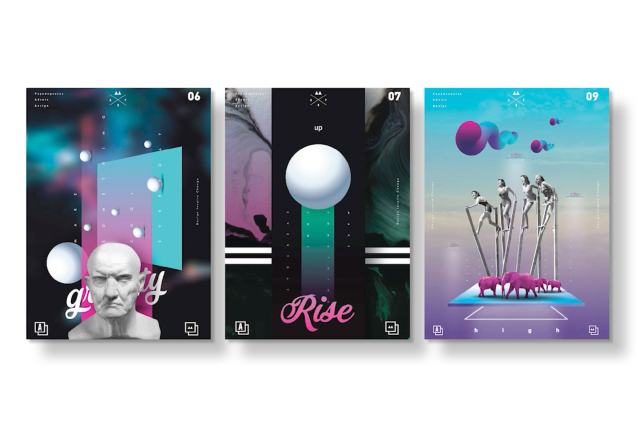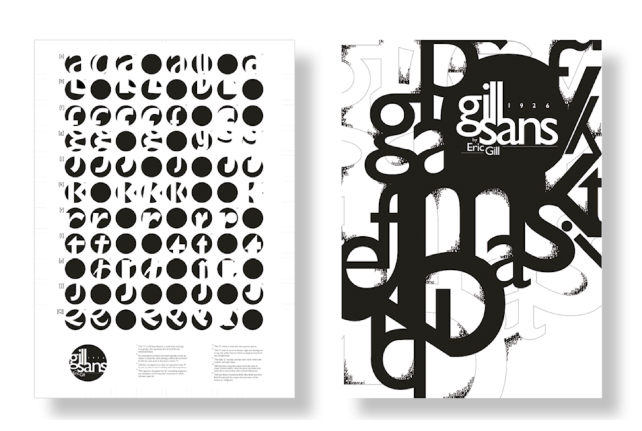PROGRAM DETAILS
Duration4 year (full time)
Fees
€8,640 per year
LanguageEnglish
CampusNicosia, Limassol
The Visual Communication program of study proposes an innovative and all-rounded approach, taking into account current debates, design and film practice developments and digital advancements. The program offers two specializations: a) Graphic Design and Digital Media, b) Film Making and Digital Media. Operating in the current conditions of constant flux, the program provides comprehensive and versatile conceptualization of the field and acute awareness of the current or anticipated developments in contemporary Graphic Design, Film and Digital Media areas.
Developed and enriched creatively over decades, the Visual Communication program established a long tradition and has played a significant role in the promotion, advancement and education in the field of visual communication in Cyprus. Offering systematic social and cultural contribution, the program has been in alignment with the Universities’ mission and its main objectives as a leading agent in the relevant fields, producing and disseminating new knowledge through a variety of innovative projects, activities and academic production in the fields of arts and design. Through its manifold collaborations and liaisons, the program has gained the respected and support of relevant professional bodies, cultural institutions and governmental agents and is in constant and close collaboration with the industry. Over the years the program’s students and faculty participate and volunteer systematically in local and international real-life projects, competitions and research projects, establishing a dynamic connection with the current state of affairs and enforcing active participation in the dissemination of social awareness. Indicative of its long history, tradition and liaisons with the industry is that the program’s graduates occupy a large percentage of the active professional posts in the fields and are highly sought after upon graduation.
The language of instruction is English.
Given that Visual Communication and Digital Media is an ever-changing field, greatly influenced by current cultural trends, economic and technological developments, the program gives strong emphasis in providing sustainable education where students are enabled to learn how to teach themselves and acquire the ability to constantly gain knowledge over time.
In its content the program aims to enable students to gain a comprehensive and versatile conceptualisation of the field and to acquire a variety of theoretical and visual research skills, necessary for the development of critical thinking, innovation and confidence. The program focuses on the development of students’ visual intelligence, literacy and competence in order to become flexible and lateral in their approach in solving challenging Visual Communication tasks. Approaching the fields of cultural studies, semiology, history of art and design, the program offers a large number of studio courses (i.e. Visual Communication, Film and Video Production, Motion Graphics and Animation Techniques, Graphic and Advertising Design, Moving Image, Design for Branding, Sound Design for Film and TV, Film Directing etc.) which introduce practice-based, real-life or self-initiated projects. Students gradually develop an all-rounded understanding and experience of the creative process, such as brief analysis/development, visual research and experimentation, audience identification, design/film development, interpretation methods, concept analysis/development, trial and error, prototype/mock-up production, testing etc. Further, through the cultivation, application and dissemination of relevant knowledge, students are also made aware of theoretical debates regarding social awareness and cultural responsibility in the context of visual communication in an effort to develop social sensibilities and understanding towards issues of gender, race, the environment etc.
Through the various teaching strategies invested in the program students also develop autonomy, personal initiative and leadership skills so as to be able to work effectively on their own as free-lance professionals or as part of teams in professional agencies, institutions and other bodies. In doing so great attention is paid to the production of a diverse digital portfolio showcasing a wide selection of final projects, enabling graduates to pursue professional posts straight out of the University.
Over the four-year duration of the program, students are ensured continuity of learning and course discipline integrity. The program’s main objectives are to:
1. Cultivate Visual Intelligence by providing the opportunity for intellectual, conceptual and creative development in order to analyse, handle and solve a wide range of projects
2. Promote Visual Literacy by providing the opportunity for aesthetic, analytical and critical development in order to research, understand and articulate ideas in visual communication
3. Enhance Visual Competency by providing the opportunity for the acquisition of traditional and alternative skills -in print, motion and digital formats-, in orded to execute and produce relevant design tasks
4. Promote Visual Diversity by providing the opportunity for familiarisation with various visual methods and gaining ease for constant adaptation in new formats and modes of production demanded by the marketplace
5. Develop Digital Awareness in the fields of visual communication by providing the opportunity for understanding the inextricable relationship between rapid technological advancements and visual communication, in order to remain constantly informed and updated
6. Cultivate Critical Thinking and Problem Solving by providing the opportunity for understanding the predominant debates and issues arising in visual communication and acquire the ability to articulate them
7. Nurture Autonomy and Leadership by providing the opportunity for initiative and confidence development in order to work on their own or in a group
8. Promote the Production of New and Innovative Knowledge by providing the opportunity for engagement with self-initiated or other research projects in uncharted territories in the field of visual communication
9. Establish Professional Conscience and Integrity by providing the opportunity for handling real life projects where complex issues of professional contact and communication arise
10. Promote Sustainable Education by providing the opportunity for understanding and practicing learning methods allowing lifelong learning
Graduates of the BA Degree will be well prepared for a dynamic future in the Design and Media industry that demands high professional standards and value creativity and innovative thinking.
- Holders of the BA Degree will have a unique combination of creative design and software specializations, which will enable them to take advantage of opportunities in video and audio production and post-production, motion graphics, web and graphic design.
- Graduates will be equipped to work in many areas of the design and audiovisual industry as Graphic Designers, Motion Graphics Animators, Web Designers, Film Directors, Cinematographers, Lighting Designers, Video Editors, still photographers etc.
- Continue for postgraduate studies at other institutions.
- The majority of the employment opportunities lie within the local creative industries. Graduates from the BA Visual Communication program fulfill the requirements for employment in the public or private sectors as media artists, filmmakers, motion graphics designers and subsequently designers for screen-based media. Graduates of the Program are comprehensively trained, visually literate and aesthetically creative and can find career pathways in a variety of fields within the graphic design and audiovisual media industry, ranging from time-based media to creative studios. The graduates of the program may also become educators in public or private secondary schools.
Admission Requirements
According to the University’s regulations, candidates for Bachelor degree programs should submit a school leaving certificate from a recognized six-form secondary school (high school) or its equivalent (other secondary schools), or equivalent qualification. Each School or Department can specify further admissions criteria such as a minimum average grade, or measures such as foundation courses for each program of study.
For the Visual Communication BA program, all candidates must take a placement test in English, prior to their enrolment in the Program. Candidates who fail the placement test must enroll for introductory courses in English in the first year of their studies.
A good knowledge of English is essential, as the language of instruction is English. Before the beginning of the Academic Year, for four weeks, students are advised to participate in Preparatory Courses in English. The English Preparatory Course is strongly recommended to all students and it is particularly helpful to students whose native language is not English.
Prior Learning Recognition and Transfer Admission:
Candidates who have graduated from a recognized six-form secondary school, and have completed university level work in an accredited program are eligible to apply for transfer admission. Such candidates should, along with their application form, submit the following documents:
- A six-form secondary school (high school) leaving certificate or equivalent qualification.
- Official transcripts (grade reports) and syllabi (course descriptions) for all University coursework taken to date.
- Transcripts are evaluated by an ad-hoc Transfer Committee consisting of the Program coordinator and two other academic staff members, in order to determine the number of credits to be transferred and issue a preliminary transfer credits evaluation report that will be handed out to the prospective student.
Recognition of Informal and Non- formal prior learning:
Candidates who have Informal or Non-formal prior learning, such as a). professional certification examinations (i.e. CISCO, etc), b). other non-University level examinations (i.e. A’ Levels, GCSE, IELTS, TOEFL, etc) or c). professional practice are eligible to apply for transfer credits. According to the University’s regulations these candidates can apply for up to 10% of the total program ECTS credits which amounts to 24 ECTS credits.
There are no specific examination regulations, assessment and grading methods employed by this Program. The examination regulations, assessment methods and grading system for this Program are the same as the relevant general university regulations.
Graduation Requirements
Students are eligible for graduation after successfully completing 240 ECTS credits in the courses listed in the Program Structure. Furthermore, a student can graduate only if their CGPA (textbox) is greater or equal to 5.00 out of 10.00. Graduating students with a CGPA less than 5.00 might have to take extra courses or repeat a number of courses in order to improve their grades.
Access to Further Studies
The graduates of the Program have access to graduate studies (2nd and 3rd Cycle) in disciplines related with the discipline of Business Administration and also gain access to professional qualifications (ACCA, AIA, ACA) with major number of exceptions.
Film Making and Digital Media
Module Group
ECTS
The student must successfully complete 131 ECTS, from the following list of modules:
| No. | Code | Name | ECTS | Hours / week |
|---|---|---|---|---|
| 1 | CVC101 | FUNDAMENTALS OF DRAWING 1 | 5 | 4 |
| 2 | CVC103 | PHOTOGRAPHY 1 | 5 | 3 |
| 3 | CVC105 | ART CONCEPTS & CONTEXTS 1 | 5 | 3 |
| 4 | CVC107 | FILM AND VIDEO PRODUCTION 1 | 5 | 3 |
| 5 | CVC109 | GRAPHIC DESIGN 1 | 5 | 3 |
| 6 | CVC111 | DIGITAL IMAGE MAKING | 5 | 2 |
| 7 | CVC102 | FUNDAMENTALS OF DRAWING 2 | 5 | 4 |
| 8 | CVC104 | PHOTOGRAPHY 2 | 5 | 2 |
| 9 | CVC106 | ART CONCEPTS & CONTEXT 2 | 5 | 3 |
| 10 | CVC108 | FILM & VIDEO PRODUCTION 2 | 5 | 3 |
| 11 | CVC110 | GRAPHIC DESIGN 2 | 5 | 3 |
| 12 | CVC201 | IMAGE MAKING PROCESSES 1 | 5 | 3 |
| 13 | CVC203 | ART CONCEPTS & CONTEXT 3 | 5 | 3 |
| 14 | CVC205 | MOTION GRAPHICS & ANIMATION TECHNIQUES 1 | 5 | 2 |
| 15 | CVC207 | VISUAL COMMUNICATION 1 | 5 | 3 |
| 16 | ARTC201 | ACADEMIC WRITING AND COMMUNICATION | 5 | 2 |
| 17 | CVC204 | ART CONCEPTS & CONTEXT 4 | 5 | 3 |
| 18 | CVC206 | MOTION GRAPHICS & ANIMATION TECHNIQUES 2 | 5 | 3 |
| 19 | CVC208 | VISUAL COMMUNICATION 2 | 5 | 3 |
| 20 | CVC301 | ART DIRECTING & PRODUCTION | 6 | 3 |
| 21 | CVC303 | MOVING IMAGE | 6 | 3 |
| 22 | CVC302 | DESIGN FOR THE WEB | 6 | 3 |
| 23 | CVC304 | ADVANCED PHOTOGRAPHIC PRACTICES | 6 | 3 |
| 24 | CVC401 | RESEARCH METHODOLOGY | 6 | 3 |
| 25 | CVC402 | CONCEPTS OF NEW MEDIA | 6 | 3 |
The student must successfully complete 73 ECTS, from the following list of modules:
| No. | Code | Name | ECTS | Hours / week |
|---|---|---|---|---|
| 1 | FVC112 | EDITING THEORY & PRACTICE | 5 | 3 |
| 2 | FVC209 | VISUAL REPRESENTATION IN FILMS | 5 | 3 |
| 3 | FVC210 | REPRESENTATIONS OF REALITY & DOCUMENTARY | 5 | 3 |
| 4 | FVC211 | PRODUCTION OF NON- FICTION FILM | 5 | 3 |
| 5 | FVC212 | ADVANCED CINEMATOGRAPHY & LIGHTING | 5 | 3 |
| 6 | FVC305 | CONTEMPORARY CINEMA | 6 | 3 |
| 7 | FVC306 | ADVANCED ART DIRECTING & SET DESIGN | 6 | 3 |
| 8 | FVC307 | AUDIO PRODUCTION & TECHNOLOGY I | 6 | 3 |
| 9 | FVC308 | SOUND DESIGN FOR FILM & TV | 6 | 3 |
| 10 | FVC309 | SHORT FILM SCREENWRITING | 6 | 3 |
| 11 | FVC310 | FILM DIRECTING | 6 | 3 |
| 12 | FVC403 | COMMERCIAL: STORYBOARDING & PRODUCTION | 6 | 3 |
| 13 | FVC405 | EXPERIMENTAL PRACTICES AND INNOVATIVE CONTEXT | 6 | 3 |
The student must successfully complete 12 ECTS, from the following list of modules:
| No. | Code | Name | ECTS | Hours / week |
|---|---|---|---|---|
| 1 | CVC400 | PLACEMENT | 6 | 0 |
| 2 | CVC410 | DESIGN FOR MOBILE APPLICATIONS | 6 | 0+3 |
| 3 | CVC412 | CONTEMPORARY ART PRACTICES | 6 | 1+2 |
| 4 | CVC413 | APPLIED DESIGN | 6 | 3 |
| 5 | CVC416 | SEMIOTICS OF TEXT & IMAGES | 6 | 3 |
| 6 | CVC417 | DRAMATURGY | 6 | 3 |
| 7 | CVC418 | MUSIC IN POPULAR CULTURE & FILMS | 6 | 3 |
| 8 | CVC419 | MULTITRACK RECORDING, EDITING & MIXING TECHNIQUES | 6 | 0+3 |
| 9 | CVC420 | NON-LINEAR MULTIMEDIA PRODUCTIONS | 6 | 3 |
The student must successfully complete 12 ECTS, from the following list of modules:
| No. | Code | Name | ECTS | Hours / week |
|---|---|---|---|---|
| 1 | FVC499 | SENIOR PROJECT | 12 | 0 |
Total
240
Semesters
ECTS
| No. | Code | Name | ECTS |
|---|---|---|---|
| 1 | CVC101 | FUNDAMENTALS OF DRAWING 1 | 5 |
| 2 | CVC103 | PHOTOGRAPHY 1 | 5 |
| 3 | CVC105 | ART CONCEPTS & CONTEXTS 1 | 5 |
| 4 | CVC107 | FILM AND VIDEO PRODUCTION 1 | 5 |
| 5 | CVC109 | GRAPHIC DESIGN 1 | 5 |
| 6 | CVC111 | DIGITAL IMAGE MAKING | 5 |
| TOTAL | 30 |
| No. | Code | Name | ECTS |
|---|---|---|---|
| 1 | CVC102 | FUNDAMENTALS OF DRAWING 2 | 5 |
| 2 | CVC104 | PHOTOGRAPHY 2 | 5 |
| 3 | CVC106 | ART CONCEPTS & CONTEXT 2 | 5 |
| 4 | CVC108 | FILM & VIDEO PRODUCTION 2 | 5 |
| 5 | CVC110 | GRAPHIC DESIGN 2 | 5 |
| 6 | FVC112 | EDITING THEORY & PRACTICE | 5 |
| TOTAL | 30 |
| No. | Code | Name | ECTS |
|---|---|---|---|
| 1 | CVC201 | IMAGE MAKING PROCESSES 1 | 5 |
| 2 | CVC203 | ART CONCEPTS & CONTEXT 3 | 5 |
| 3 | CVC205 | MOTION GRAPHICS & ANIMATION TECHNIQUES 1 | 5 |
| 4 | CVC207 | VISUAL COMMUNICATION 1 | 5 |
| 5 | FVC209 | VISUAL REPRESENTATION IN FILMS | 5 |
| 6 | FVC210 | REPRESENTATIONS OF REALITY & DOCUMENTARY | 5 |
| TOTAL | 30 |
| No. | Code | Name | ECTS |
|---|---|---|---|
| 1 | ARTC201 | ACADEMIC WRITING AND COMMUNICATION | 5 |
| 2 | CVC204 | ART CONCEPTS & CONTEXT 4 | 5 |
| 3 | CVC206 | MOTION GRAPHICS & ANIMATION TECHNIQUES 2 | 5 |
| 4 | CVC208 | VISUAL COMMUNICATION 2 | 5 |
| 5 | FVC211 | PRODUCTION OF NON- FICTION FILM | 5 |
| 6 | FVC212 | ADVANCED CINEMATOGRAPHY & LIGHTING | 5 |
| TOTAL | 30 |
| No. | Code | Name | ECTS |
|---|---|---|---|
| 1 | CVC301 | ART DIRECTING & PRODUCTION | 6 |
| 2 | CVC302 | DESIGN FOR THE WEB | 6 |
| 3 | FVC305 | CONTEMPORARY CINEMA | 6 |
| 4 | FVC307 | AUDIO PRODUCTION & TECHNOLOGY I | 6 |
| 5 | FVC309 | SHORT FILM SCREENWRITING | 6 |
| TOTAL | 30 |
| No. | Code | Name | ECTS |
|---|---|---|---|
| 1 | CVC303 | MOVING IMAGE | 6 |
| 2 | CVC304 | ADVANCED PHOTOGRAPHIC PRACTICES | 6 |
| 3 | FVC306 | ADVANCED ART DIRECTING & SET DESIGN | 6 |
| 4 | FVC308 | SOUND DESIGN FOR FILM & TV | 6 |
| 5 | FVC310 | FILM DIRECTING | 6 |
| TOTAL | 30 |
| No. | Code | Name | ECTS |
|---|---|---|---|
| 1 | CVC401 | RESEARCH METHODOLOGY | 6 |
| 2 | FVC403 | COMMERCIAL: STORYBOARDING & PRODUCTION | 6 |
| 3 | FVC405 | EXPERIMENTAL PRACTICES AND INNOVATIVE CONTEXT | 6 |
| 4 | FREE ELECTIVE | 6 | |
| 5 | VISUAL COMMUNICATION ELECTIVE | 6 | |
| TOTAL | 30 |
| No. | Code | Name | ECTS |
|---|---|---|---|
| 1 | CVC402 | CONCEPTS OF NEW MEDIA | 6 |
| 2 | FVC499 | SENIOR PROJECT | 12 |
| 3 | FREE ELECTIVE | 6 | |
| 4 | VISUAL COMMUNICATION ELECTIVE | 6 | |
| TOTAL | 30 |
Graphics and Digital Media
Module Group
ECTS
The student must successfully complete 131 ECTS, from the following list of modules:
| No. | Code | Name | ECTS | Hours / week |
|---|---|---|---|---|
| 1 | CVC111 | DIGITAL IMAGE MAKING | 5 | 2 |
| 2 | CVC102 | FUNDAMENTALS OF DRAWING 2 | 5 | 4 |
| 3 | CVC104 | PHOTOGRAPHY 2 | 5 | 2 |
| 4 | CVC106 | ART CONCEPTS & CONTEXT 2 | 5 | 3 |
| 5 | CVC108 | FILM & VIDEO PRODUCTION 2 | 5 | 3 |
| 6 | CVC110 | GRAPHIC DESIGN 2 | 5 | 3 |
| 7 | CVC201 | IMAGE MAKING PROCESSES 1 | 5 | 3 |
| 8 | CVC203 | ART CONCEPTS & CONTEXT 3 | 5 | 3 |
| 9 | CVC205 | MOTION GRAPHICS & ANIMATION TECHNIQUES 1 | 5 | 2 |
| 10 | CVC207 | VISUAL COMMUNICATION 1 | 5 | 3 |
| 11 | ARTC201 | ACADEMIC WRITING AND COMMUNICATION | 5 | 2 |
| 12 | CVC204 | ART CONCEPTS & CONTEXT 4 | 5 | 3 |
| 13 | CVC206 | MOTION GRAPHICS & ANIMATION TECHNIQUES 2 | 5 | 3 |
| 14 | CVC208 | VISUAL COMMUNICATION 2 | 5 | 3 |
| 15 | CVC301 | ART DIRECTING & PRODUCTION | 6 | 3 |
| 16 | CVC303 | MOVING IMAGE | 6 | 3 |
| 17 | CVC302 | DESIGN FOR THE WEB | 6 | 3 |
| 18 | CVC304 | ADVANCED PHOTOGRAPHIC PRACTICES | 6 | 3 |
| 19 | CVC401 | RESEARCH METHODOLOGY | 6 | 3 |
| 20 | CVC402 | CONCEPTS OF NEW MEDIA | 6 | 3 |
| 21 | CVC103 | PHOTOGRAPHY 1 | 5 | 3 |
| 22 | CVC105 | ART CONCEPTS & CONTEXTS 1 | 5 | 3 |
| 23 | CVC107 | FILM AND VIDEO PRODUCTION 1 | 5 | 3 |
| 24 | CVC109 | GRAPHIC DESIGN 1 | 5 | 3 |
| 25 | CVC101 | FUNDAMENTALS OF DRAWING 1 | 5 | 4 |
The student must successfully complete 12 ECTS, from the following list of modules:
| No. | Code | Name | ECTS | Hours / week |
|---|---|---|---|---|
| 1 | CVC400 | PLACEMENT | 6 | 0 |
| 2 | CVC410 | DESIGN FOR MOBILE APPLICATIONS | 6 | 0+3 |
| 3 | CVC412 | CONTEMPORARY ART PRACTICES | 6 | 1+2 |
| 4 | CVC413 | APPLIED DESIGN | 6 | 3 |
| 5 | CVC416 | SEMIOTICS OF TEXT & IMAGES | 6 | 3 |
| 6 | CVC417 | DRAMATURGY | 6 | 3 |
| 7 | CVC418 | MUSIC IN POPULAR CULTURE & FILMS | 6 | 3 |
| 8 | CVC419 | MULTITRACK RECORDING, EDITING & MIXING TECHNIQUES | 6 | 0+3 |
| 9 | CVC420 | NON-LINEAR MULTIMEDIA PRODUCTIONS | 6 | 3 |
| 10 | ARTE120 | SYSTEMIC DESIGN | 6 | 3 |
The student must successfully complete 73 ECTS, from the following list of modules:
| No. | Code | Name | ECTS | Hours / week |
|---|---|---|---|---|
| 1 | GVC112 | DIGITAL DRAWING | 5 | 3 |
| 2 | GVC209 | EDITORIAL DESIGN | 5 | 2 |
| 3 | GVC211 | GRAPHIC AND ADVERTISING DESIGN 1 | 5 | 4 |
| 4 | GVC210 | IMAGE MAKING PROCESSES 2 | 5 | 3 |
| 5 | GVC212 | GRAPHIC AND ADVERTISING DESIGN 2 | 5 | 4 |
| 6 | GVC305 | ILLUSTRATION PRACTICES | 6 | 3 |
| 7 | GVC307 | ADVANCED TYPOGRAPHY | 6 | 3 |
| 8 | GVC309 | PACKAGE DESIGN | 6 | 3 |
| 9 | GVC306 | HISTORY OF GRAPHICS | 6 | 3 |
| 10 | GVC308 | ADVANCED GRAPHIC | 6 | 3 |
| 11 | GVC310 | DESIGN FOR BRANDING | 6 | 3 |
| 12 | GVC403 | DESIGN FOR PUBLISHING | 6 | 3 |
| 13 | GVC405 | INFORMATION DESIGN | 6 | 3 |
The student must successfully complete 12 ECTS, from the following list of modules:
| No. | Code | Name | ECTS | Hours / week |
|---|---|---|---|---|
| 1 | GVC499 | SENIOR PROJECT | 12 | 0 |
Total
240
Semesters
ECTS
| No. | Code | Name | ECTS |
|---|---|---|---|
| 1 | CVC101 | FUNDAMENTALS OF DRAWING 1 | 5 |
| 2 | CVC103 | PHOTOGRAPHY 1 | 5 |
| 3 | CVC105 | ART CONCEPTS & CONTEXTS 1 | 5 |
| 4 | CVC107 | FILM AND VIDEO PRODUCTION 1 | 5 |
| 5 | CVC109 | GRAPHIC DESIGN 1 | 5 |
| 6 | CVC111 | DIGITAL IMAGE MAKING | 5 |
| TOTAL | 30 |
| No. | Code | Name | ECTS |
|---|---|---|---|
| 1 | CVC102 | FUNDAMENTALS OF DRAWING 2 | 5 |
| 2 | CVC104 | PHOTOGRAPHY 2 | 5 |
| 3 | CVC106 | ART CONCEPTS & CONTEXT 2 | 5 |
| 4 | CVC108 | FILM & VIDEO PRODUCTION 2 | 5 |
| 5 | CVC110 | GRAPHIC DESIGN 2 | 5 |
| 6 | GVC112 | DIGITAL DRAWING | 5 |
| TOTAL | 30 |
| No. | Code | Name | ECTS |
|---|---|---|---|
| 1 | CVC201 | IMAGE MAKING PROCESSES 1 | 5 |
| 2 | CVC203 | ART CONCEPTS & CONTEXT 3 | 5 |
| 3 | CVC205 | MOTION GRAPHICS & ANIMATION TECHNIQUES 1 | 5 |
| 4 | CVC207 | VISUAL COMMUNICATION 1 | 5 |
| 5 | GVC209 | EDITORIAL DESIGN | 5 |
| 6 | GVC211 | GRAPHIC AND ADVERTISING DESIGN 1 | 5 |
| TOTAL | 30 |
| No. | Code | Name | ECTS |
|---|---|---|---|
| 1 | ARTC201 | ACADEMIC WRITING AND COMMUNICATION | 5 |
| 2 | CVC204 | ART CONCEPTS & CONTEXT 4 | 5 |
| 3 | CVC206 | MOTION GRAPHICS & ANIMATION TECHNIQUES 2 | 5 |
| 4 | CVC208 | VISUAL COMMUNICATION 2 | 5 |
| 5 | GVC210 | IMAGE MAKING PROCESSES 2 | 5 |
| 6 | GVC212 | GRAPHIC AND ADVERTISING DESIGN 2 | 5 |
| TOTAL | 30 |
| No. | Code | Name | ECTS |
|---|---|---|---|
| 1 | CVC301 | ART DIRECTING & PRODUCTION | 6 |
| 2 | CVC302 | DESIGN FOR THE WEB | 6 |
| 3 | GVC305 | ILLUSTRATION PRACTICES | 6 |
| 4 | GVC307 | ADVANCED TYPOGRAPHY | 6 |
| 5 | GVC309 | PACKAGE DESIGN | 6 |
| TOTAL | 30 |
| No. | Code | Name | ECTS |
|---|---|---|---|
| 1 | CVC303 | MOVING IMAGE | 6 |
| 2 | CVC304 | ADVANCED PHOTOGRAPHIC PRACTICES | 6 |
| 3 | GVC306 | HISTORY OF GRAPHICS | 6 |
| 4 | GVC308 | ADVANCED GRAPHIC | 6 |
| 5 | GVC310 | DESIGN FOR BRANDING | 6 |
| TOTAL | 30 |
| No. | Code | Name | ECTS |
|---|---|---|---|
| 1 | CVC401 | RESEARCH METHODOLOGY | 6 |
| 2 | GVC403 | DESIGN FOR PUBLISHING | 6 |
| 3 | GVC405 | INFORMATION DESIGN | 6 |
| 4 | FREE ELECTIVE | 6 | |
| 5 | VISUAL COMMUNICATION ELECTIVE | 6 | |
| TOTAL | 30 |
| No. | Code | Name | ECTS |
|---|---|---|---|
| 1 | CVC402 | CONCEPTS OF NEW MEDIA | 6 |
| 2 | GVC499 | SENIOR PROJECT | 12 |
| 3 | FREE ELECTIVE | 6 | |
| 4 | VISUAL COMMUNICATION ELECTIVE | 6 | |
| TOTAL | 30 |
The delivery of the program of study is supported by the following members of staff:
| Rank | Name |
|---|---|
| Professor | Prof. Costas Mantzalos |
| Associate Professor - Programme Coordinator | Ms. Artemis Eleftheriadou |
| Associate Professor | Mr. Demetris Kokkinolambos |
| Associate Professor | Mr. Nicolas Lambouris |
| Associate Professor | Mr. Panayiotis Michael |
| Associate Professor | Ms. Hourig Torossian |
| Assistant Professor | Mr. Christos Andreou |
| Assistant Professor | Dr. Emilios Charalambides |
| Assistant Professor | Mr. Panayiotis Charalambous |
| Assistant Professor | Ms. Christiana Constantinou |
| Assistant Professor | Dr. Anna Louise Merry |
| Assistant Professor | Mr. Savvas Xinaris |
| Special Teaching Staff | Ms. Ioanna Amerikanou |
| Special Teaching Staff | Mr. Paris El Said |







